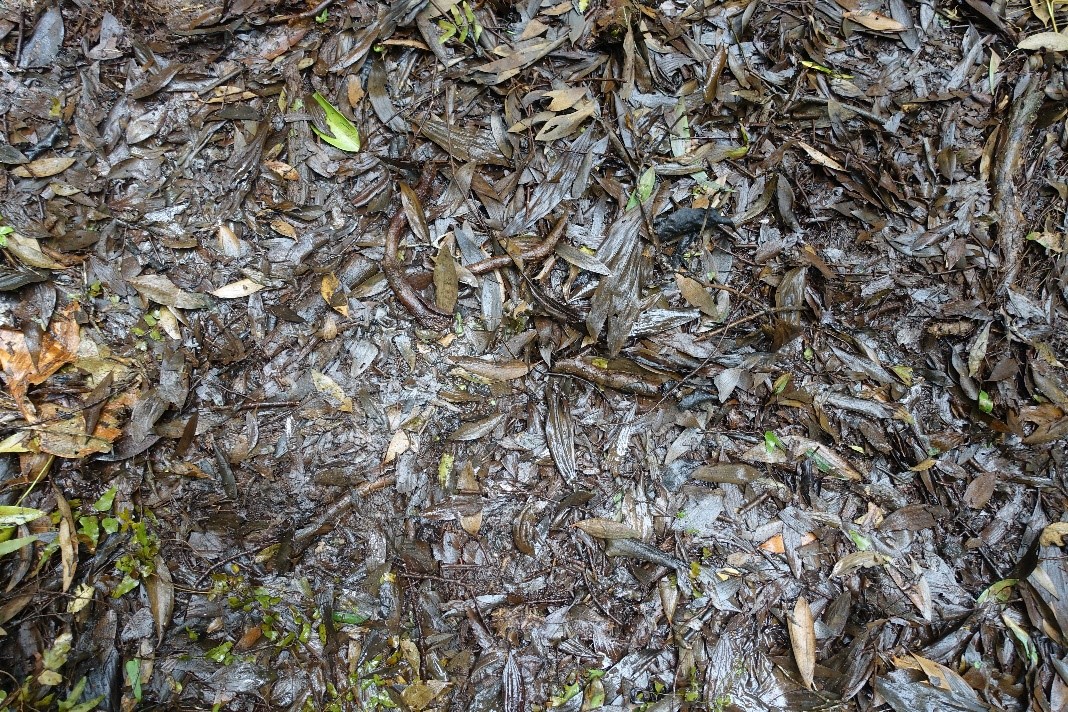Stories
Peat Forest Protection in Tan Thanh District, Long An Province, Vietnam
Aug 19, 2022 by Eli Nur Nirmala SariBanner Image By : Credit: Eli Nur Nirmala Sari/WRI/PFP. The appearance of the melaleuca peat forest in Tan Thanh District, Long An Province, Vietnam.
The People for Peat (PFP) team consisting of the WRI Indonesia team and the Malaysia TRCRC team, accompanied by Prof. Nguyen Koi Nghia, Associate Professor in Soil and Environmental Microbiology, Department of Soil Science, Can Tho University, Vietnam, visited the melaleuca peat forest in Tan Thanh district, Long An Province, Vietnam. To get to the location, we rode a small motorized boat along rivers and artificial canals, which took about 20 minutes from the main provincial road 829. Before we docked the boat, we could immediately see the difference between the melaleuca peat forest and its surrounding, even from a distance. The land looks green as it is filled with trees, which is in stark contrast to the surrounding land, which is open land without tree vegetation.
Arriving at the melaleuca peat forest, Prof. Nghia began to explain, “this forest has existed for a long time, around 40 years ago, and was deliberately planted with the melaleuca species. This forest area is about 150 ha and is state-owned land, but this forest is managed by the private sector, a company engaged in providing seeds. The peat depth here is about 1 meter to 1.5 meter.”
There are clearly visible trees with medium density. The air under the melaleuca tree stands also feels cool, very different from the air outside the forest, which feels hot and stifling. “About 30 years ago, some communities around here looted melaleuca wood to be used as building construction materials. In addition to taking the wood, communities used to hunt birds in this melaleuca peat forest in the past. But now, this melaleuca forest is a protected forest, so there is no longer any looting of wood. Because it is protected, the condition of the forest is much better,” Prof. Nghia added.
Right at the edge of the forest, there is an artificial canal, which is also the boundary between forest land and the surrounding open land. This is the same canal we went through to access the melaleuca peat forest. “This canal was built about 15 to 20 years ago, which was intended to regulate water. During the dry season, the canal gate is closed, so that water can still wet the surrounding peatlands. The water here is also sometimes used to extinguish fires in case of peat fires,” said Prof. Nghia.
From our observations on the surface of the peatlands in the melaleuca peat forest, it is very clear that the surface conditions of the peatlands are wet. It is also very clear that the leaf litter that falls on the surface of the peatland does not decompose completely due to the wet peatland surface condition and is also partially inundated. This indicates that the groundwater level in this melaleuca peat forest is quite high, which causes the forest surface to be wet and also partially inundated. Forest conditions with medium tree density can also form a fairly dense canopy cover, which protects the peat forest from high evaporation so that the surface of the peatland is kept moist.
Xuan, a local resident, said that the current condition of the melaleuca peat forest is much better than before. “I have lived near here since I was born 40 years ago. According to my observations, the organic layer of peat in this forest is getting thicker and thicker. Maybe because since 30 years ago, the melaleuca forest was protected, so there was no disturbance or human threat. Thus, the trees in the forest can grow well and can form a thick layer of peat,” said Xuan.

From our visit to this melaleuca peat forest, we understand more and more that protecting peat forests is important. Protection of peat forests will support peat forests to grow well naturally, form a balance of their own ecosystems, and especially support the formation of peat. Thus, the protection of peat forests is important to avoid threats to peat forests.